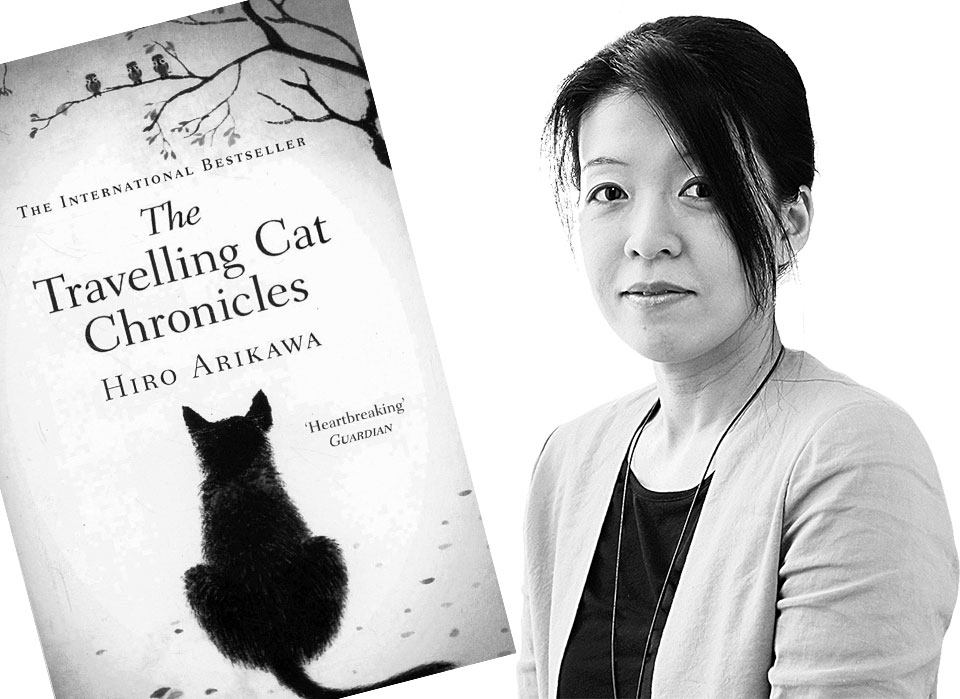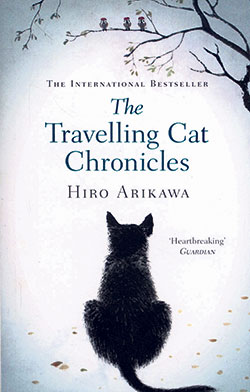
OR

A celebration of the bond between humans and their pets (or pets and their humans)
I’ve never enjoyed stories about animals. I didn’t cry while watching The Lion King (which says a lot because you’ll usually find me tearing up by the end of most Disney movies, even the happy ones) and always get bored halfway through movies like Finding Nemo and The Jungle Book. You could say I’m not really an animal person. Most of the time, I just feel like I can’t relate with these animal characters portrayed in movies. Because of this, I’ve never so much as touched a book that is centered on animals (Unless you count Roald Dahl’s Fantastic Mr. Fox, Esio Trot, and The Giraffe, The Pelly and Me – none of which particularly interested me.)
But after reading The Travelling Cat Chronicles by Hiro Arikawa, I feel like I might have missed out on a huge chunk of fantastic literature by avoiding animal centric books altogether. Originally published in Japanese in 2012, the book was translated into English in 2017 and it has been well received among English readers since then.
A major reason why I liked this novel so much might be because the protagonist of the book is a cat, one of the few animals I actually like. A stray is adopted by Satoru, the human lead character of the story, and the cat starts the story by telling us how he got his name. Satoru gives him the name Nana (after the word for number seven in Japanese) because he thinks the cat’s hooked tail looks like number seven from above. The two stumble across each other because they live in the same neighborhood and Nana isn’t very keen to give up his ‘dignified’ life as a stray in the beginning. He actually warms up to Satoru because he nurses him back to health after an accident.
The majority of the book follows Satoru and Nana’s journey around Japan as Satoru visits his school and college friends. All of these friends have agreed to Satoru’s request to take Nana in because Satoru is suddenly unable to look after Nana anymore. Though Arikawa doesn’t disclose why till the very end of the book, you are able to guess because there are more than a few clues. (Pay attention to what the other animals have to say about Satoru.)
The book also tells the story of a young Satoru. We learn about his childhood, a few major events that shaped his life, and his late pet cat Hachi (named after the number eight in Japanese,) who closely resembled Nana. These flashbacks come every few pages and although I felt like it disturbed the narration of the book the first few times this happened, I learned to like this break from the original narration and looked forward to these small tales of Satoru’s past later on.
More than half of the book is narrated from Nana’s perspective. And Nana’s narration feels very real. Nana feels, thinks and understands the world just like a human would. The feline is sassy, intelligent and has a dry sense of humor, and the combination of all of these things makes reading what he has to say very enjoyable. But the other half – where we learn about Satoru’s past – is from a third person’s point of view.
The whole story has a humorous, almost cartoonish, feel to it. Nana’s monologues sometimes feel like the animated monologues in the Disney sitcom Lizzie McGuire. For the most part, this makes the book a light and easy read but it also takes away its emotional impact a lot of the times because even serious and sentimental moments have an undertone of jocularity. Despite all of this, the book definitely makes you tear up near the end. I cried because I was very moved by the friendship between Satoru and Nana. The two of them genuinely care for and understand each other and are ready to sacrifice a lot for the other’s well being.
I really liked the way Arikawa progressed with the story – giving us small glimpses of Satoru’s past and leaving tiny hints about the reason why he wants someone else to look after Nana every now and then, and then directing us right back to the current timeline. The story is also filled with different aspects of Japanese culture and because all of Satoru’s friends live in the countryside, and he and Nana are travelling in his silver van, Arikawa also describes many beautiful Japanese destinations in great detail.
I’m sure everyone who has a pet or loves animals will enjoy reading this book. Arikawa does a wonderful job of showcasing the strong bond between a compassionate human and his pet. If you have a pet, you will definitely be able to relate to Satoru and his relationship with Nana. For me, reading The Travelling Cat Chronicles opened me up to the world of animal centric stories and put an end to my dislike for this genre of literary fiction.

The Travelling Cat Chronicles
Hiro Arikawa
Translated by Philip Gabriel
Illustrated by Yoco Nagamia
Published: 2017
Publisher: Doubleday
Pages: 247, Paperback
You May Like This

Beyonce's 'love letter to Africa', 'Spirit' music video out
A week after releasing 'Spirit' from Disney's 'The Lion King', singer-songwriter Beyonce has dropped the music video of the song. Read More...

Beyoncé drops new original song from ‘The Lion King’
Beyoncé has dropped a new original song from Disney’s live-action “Lion King.” ... Read More...

Disney's "Lion King" remake roars to life with new trailer
LONDON, April 11: With stunning scenery of Africa and some talking wildlife, Disney dropped its first full length trailer for... Read More...




Just In
- District Court Rautahat sentences four individuals including Aftab Alam to life imprisonment
- Class 12 exam starts today with participation of over 390,000 candidates
- Weather expected to be partially cloudy in hilly areas, clear in remaining areas
- Navigating the Digital Diplomacy Divide: Balancing Tradition and Technology in Global Relations
- Youth attempts suicide amid police torture over Facebook comments against home minister
- Time to declare EVMs’ end
- World Malaria Day: Foreign returnees more susceptible to the vector-borne disease
- MoEST seeks EC’s help in identifying teachers linked to political parties














Leave A Comment